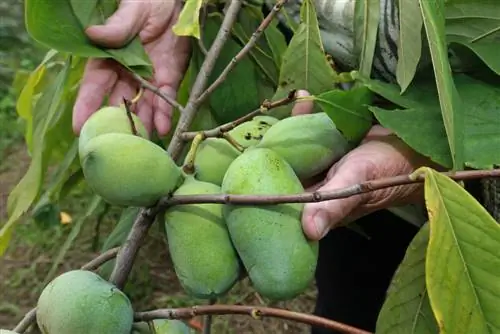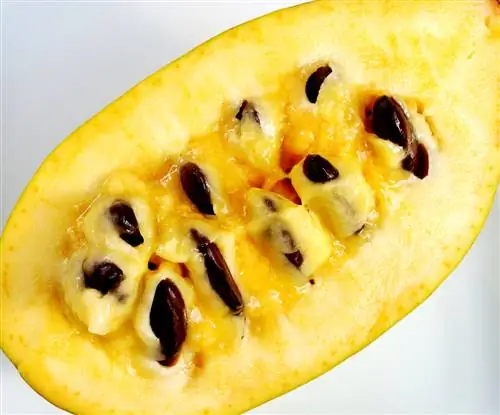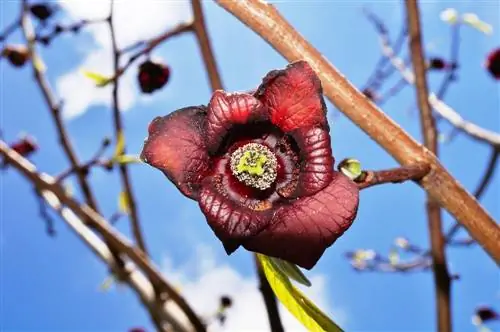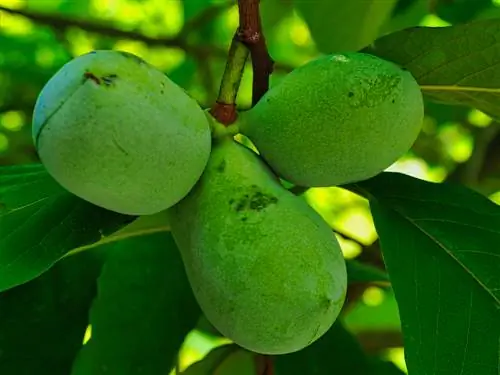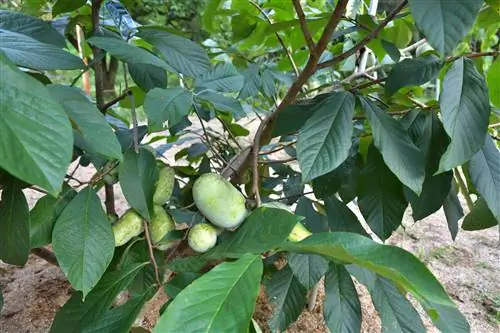- Author admin [email protected].
- Public 2024-01-10 23:11.
- Last modified 2025-01-23 11:22.
The Indian banana is not just an impressive deciduous tree. It also bears delicious fruit. They are occasionally offered at farmers markets or over the Internet. They can also be harvested from your home garden. Their appearance reveals little about the contents. We'll clarify.
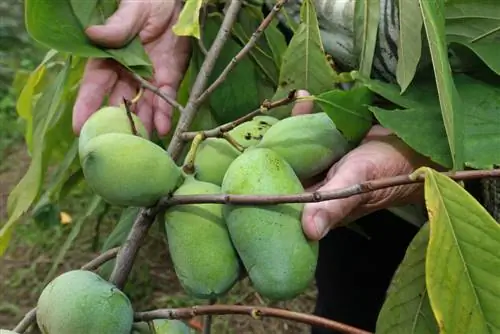
What does the Indian banana taste like and how do you eat it?
The Indian banana, also known as pawpaw, is an exotic-tasting fruit whose taste is reminiscent of a mixture of mango, pineapple, banana, lemon and passion fruit. The ripe fruits are golden yellow and soft, and can be spooned straight out of the shell along with their soft pulp.
Appearance and size
When unripe, the fruits are green in color. As they mature, they change color. Whether it is just a faint yellow-green or a rich golden yellow depends on the variety. Shape and weight are also determined by the strain's genes. They are mostly reminiscent of mangoes, are approx. 8 to 10 cm long and weigh around 200 grams.
In order to obtain numerous large fruits, Indian bananas are grafted when they are young.
Taste
The taste is exotic and still unfamiliar to us, which is why it is difficult to describe. The easiest way is to compare it with well-known types of fruit. The following aroma components are represented, although they are slightly different for each variety:
- Mango
- Pineapple
- Banana
- Lemon
- Passionfruit
Recognizing maturity
Indian bananas have their season in autumn. They are ready to harvest sometime between the end of August and mid-October. Only ripe fruits taste good. Whether you're shopping or harvesting at home, you should know these signs of ripeness:
- the shell has turned yellow
- she gives in a little under pressure
- the fruit is fragrant
Ripe Indian bananas can only be stored for about three days. Unripe specimens can last up to four weeks in the refrigerator. During this time they mature.
Food
Indian bananas are not peeled because their flesh is very soft. Instead, you can cut the fruit open and eat the pulp straight from the peel with a spoon. The large, dark brown seeds are removed beforehand.
The flesh of the Indian banana can enrich smoothies and milkshakes. It also tastes good in yogurt or quark.
Pollination problems
Many gardeners would like to plant this tree so that they can harvest their own fruit. But in order for the coveted fruits to actually come, the flowers have to be pollinated.
Only a few varieties are self-pollinating. Everyone else needs a foreign pollinator species nearby. In addition, the floral scent of the Indian banana is not liked by local insects. They are therefore rarely flown to. In order for the harvest yield to be higher, the flowers must be pollinated with a brush (€6.00 on Amazon) or cotton swab.
Note:The first fruits can generally only be expected after a few years. Indian bananas grown from seeds bloom after seven to ten years. Refined specimens after three or four years.

